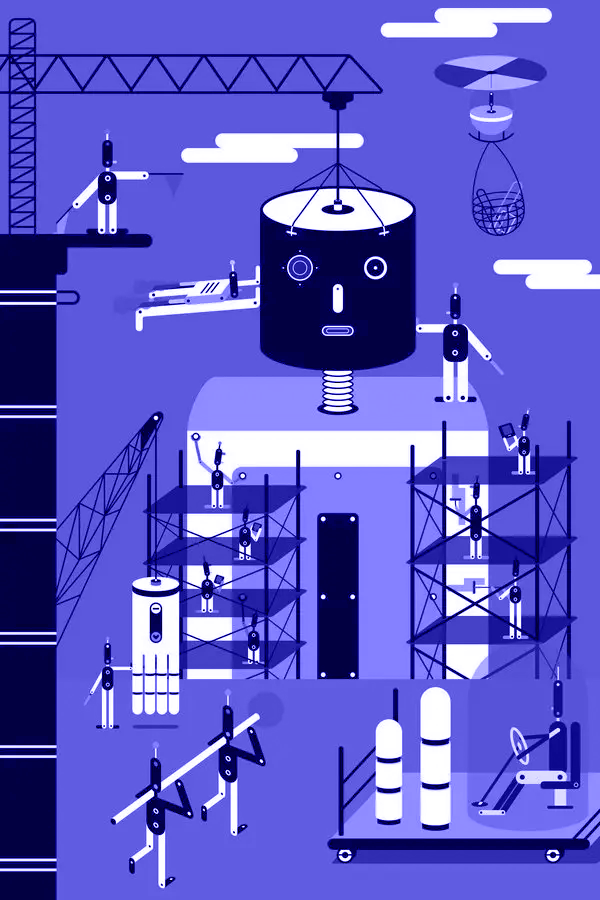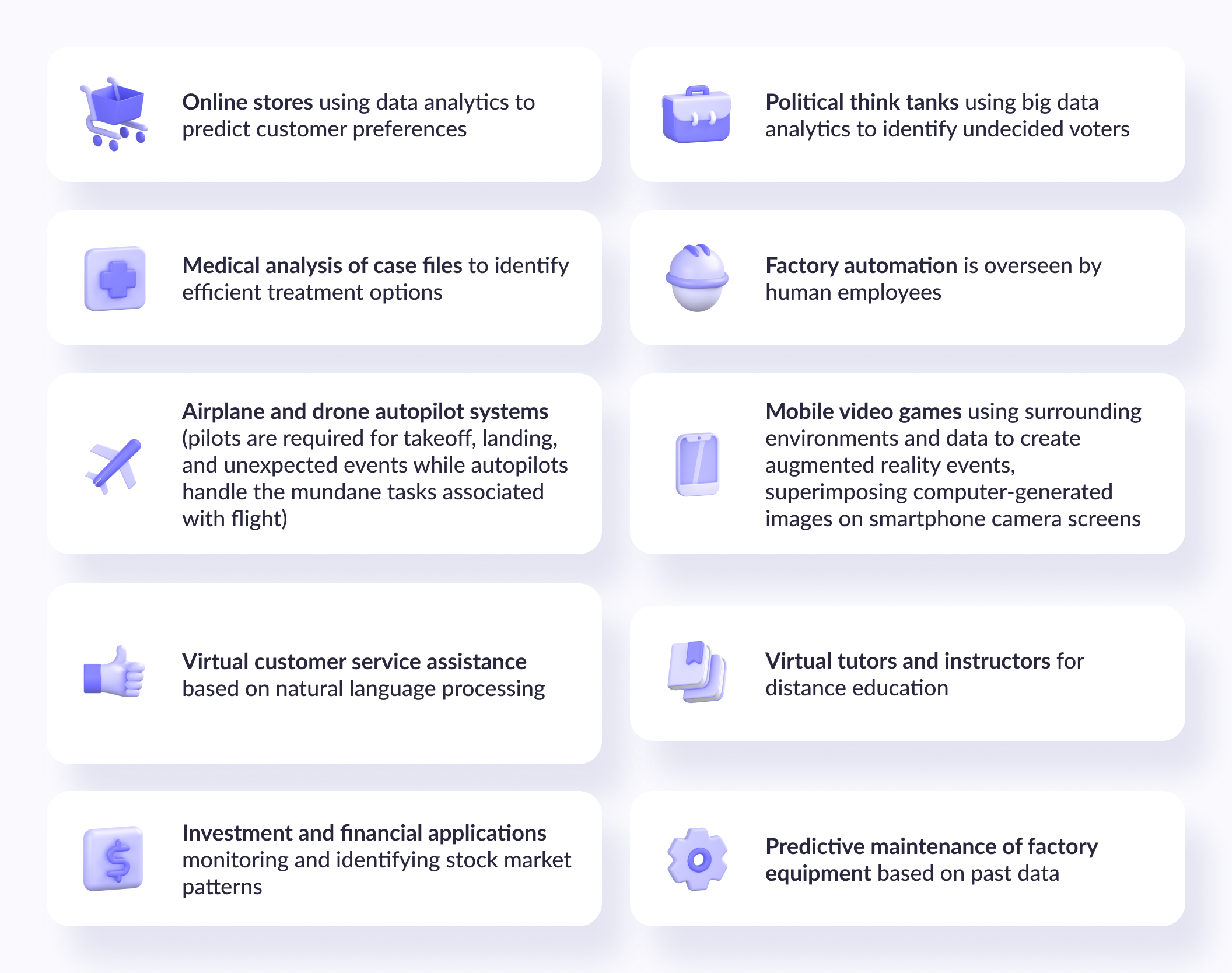Sustaining development speed often causes inefficiency and developer burnout due to tight deadlines, evolving requirements, and repetitive tasks.
IntelliSense and similar traditional tools provide developers with function suggestions, but these tools fall short of realizing the full potential of advanced code completion. As a result, development workflows slow down, with many engineers spending twice as much time on code debugging and repetitive code creation.
According to the JetBrains State of Developer Ecosystem report, 53% of engineers manually review AI-generated code, and in 28% of cases, the code introduces security flaws. Does AI make us more productive, or does it move the effort of coding to debugging the output of AI-generated code?
In this guide, we’ll explore the tangible benefits and less obvious drawbacks of AI-augmented development, from improving efficiency to tackling technical and safety issues. You’ll gain insights into best practices for using AI tools while maintaining code quality and developer control.
What is AI-augmented software development?
AI-augmented development refers to a set of tools and platforms that help developers create apps more quickly and reliably than with traditional manual coding.
AI-augmented software development systems offer several benefits, including automating repetitive tasks, suggesting code frameworks, and generating full functions. These tools are the future of the software development process in many ways, but how different are they from traditional methods?
AI-augmented development vs. traditional software development
AI-augmented app development improves collaboration and productivity across software teams. Whether you're a developer, an IT manager, a security expert, or a quality assurance (QA) engineer, AI-powered platforms help you work faster with improved results.
The primary distinction between AI-augmented and traditional software engineering is the time and effort saved. Conventional methods usually rely on established processes, while AI uses ML and predictive analytics to automate problem-solving and deliver insights that people might overlook.
Take a look at this comparison table:
Feature | Traditional development | AI-augmented development |
Coding speed | Manual and slower, depends heavily on the developer's skill | Accelerated with tools like Copilot and Tabnine |
Error detection | Manual debugging, post-development testing | Real-time suggestions and bug detection |
Code consistency | Varies between developers | Standardized via model training and code recommendations |
Testing | Manual/unit tests, time-consuming | Automated testing, smarter unit test generation |
Documentation | Often neglected or written after development | Auto-generated documentation using natural language processing (NLP) |
Learning curve | High, especially for junior developers | AI assistants reduce ramp-up time, simplifying the onboarding process |
Innovation time | Spent fixing bugs and writing boilerplate code | More time for architecture, strategy, and creative problem-solving |
How can AI help?

Documenting and explaining the existing code
OpenAI models can analyze existing code and generate clear, accurate, and easy-to-understand explanations. This is especially valuable when working with legacy code, which is frequently unclear due to inadequate documentation. These AI-generated insights serve as maintenance tools for your teams and effective training materials for new personnel.
Enhancing QA and defect remediation
Besides identifying bugs, modern AI chatbots can suggest appropriate fixes to resolve them. Advanced AI platforms can significantly automate software testing, shortening the development cycle.
Transitioning between environments and programming languages
Tools like CodeConvert and CodeWhisperer help developers convert code between programming languages without losing functionality.
Supporting low-code and no-code development
Low-сode/no-code (LCNC) platforms are already streamlining businesses' operations. The AI-powered assistants in platforms like Microsoft Power Apps and Appian allow users to explain workflows in plain English and automatically generate functional applications. This democratizes programming efforts while preserving IT standards.
Geniusee's experience with AI-augmented software development
Geniusee stays at the forefront of app development by adopting AI-augmented approaches. We offer dedicated AI-augmented development teams for our clients to accelerate the software development lifecycle (SDLC) and reduce costs.
In addition to AI staff augmentation, we also assist clients in upgrading their development processes by integrating ChatGPT and other AI-driven tools through APIs for tasks like code generation, testing, and automation.
In our work, we are focused on 3 main tools for AI-augmented development:
Chat GPT
OpenAI ChatGPT language model comprehends NLP inputs and generates context-aware responses. Although ChatGPT is not designed specifically for coding, we still use it to draft documentation, develop test cases, and explain complex logic.
Codex
OpenAI Codex turns natural language into high-quality code. Trained on a large dataset of code examples, it understands the structure and logic of programming languages.
Copilot
GitHub Copilot helps developers write code faster by providing context-aware snippets directly within the IDE. It makes coding easier by reducing repetitive tasks and accelerating the overall development process.
We also use a wide range of other AI-powered coding tools, such as:
Tabnine
Captain Stack
GPT-CC (GPT-Code-Clippy)
Second Mate
IntelliCode
CodeWhisperer
YouCompleteMe
Asm-Dude
Atom
Clara
and many others.
Want to see how AI can transform your development process? Check our portfolio, or book a call for a free consultation with experts.
AI software development limitations

AI speedіng up the development process, but before you use it on a larger scale, it’s important to understand where it still falls short:
1. Lack of creativity
AI can generate code and ideas, but it can’t replicate human creativity. Intuition, deep knowledge of a specific area, and refined design judgment, especially from mid- to senior-level developers, remain irreplaceable. In complex development projects, their expertise is essential to design the architecture, ensure high-quality code, and make critical decisions that AI can't handle.
2. Effects on human roles
AI automates repetitive coding and testing tasks, so junior developers don't have to do as much manual work. However, this shift doesn’t replace people – it enhances them. Developers must upskill to collaborate with AI and focus on more strategic, decision-driven tasks.
3. Price
While AI speeds up workflows, it isn’t free. You need to invest in the models, keep and support them on a strong infrastructure. For small and mid-sized organizations, these expenses can quickly impact ROI.
4. Lack of experienced adjustment
AI tools rely on data patterns, not practical experience. They often lack awareness of company-specific processes or real-time customer emotions, which can result in tone-deaf responses.
5. Lack of contextual understanding
AI doesn’t always grasp subtle context or ethical implications. For example, dynamic pricing algorithms might charge extra during emergencies, failing to consider the human context behind it.
6. Challenges in implementation
Integrating AI into your workflow isn’t as simple as it might seem. It requires system compatibility, ongoing updates, staff retraining, and a robust change management process to provide smooth integration and sustained performance over time.
AI-augmented development use cases
Augmented intelligence and deep learning transform how industries use big data to identify patterns and make predictive decisions. Here are some use cases:

1. AI-enabled citizen developers
AI-powered no-code and low-code platforms are opening the doors for software creation for non-engineers. These tools offer pre-built components, automate code generation, and simplify design choices. While experienced developers are still essential for QA and security, AI democratizes access to software development across sectors.
2. Data-driven app design
AI excels at analyzing massive volumes of data to spot patterns, user behavior, and areas for improvement. However, as data usage scales, so do concerns: data privacy, regulatory compliance, and storage infrastructure become pressing issues every growing business must address.
3. Concerns about AI-augmented software's security
When you add AI to your systems, you face more complexity and new security risks. If AI-based systems aren’t regularly audited, they can potentially develop into cyber threats. AI itself doesn’t launch attacks, but poorly protected algorithms can be exploited.
4. AI building AI
AI is now capable of generating new models and code autonomously. While it accelerates innovation, it also raises safety concerns. Human oversight is critical to regulate self-generating systems in long-term development.
5. AI and the democratization of technology
Startups and smaller businesses can now access computing power and intelligence previously only available to tech giants thanks to cloud-based AI tools. By lowering conventional barriers of entry, this change stimulates innovation across various industries, including edtech, finance, real estate, and retail.

More from our blog
Master AI compliance: stay ahead of regulations
Struggling with AI compliance? Learn how to meet regulations, minimize risks, and boost your business.
Read moreHow AI can help develop better software faster
Developers use AI to enhance each stage of software development, from gathering requirements to deployment. Here’s how AI contributes at each step:
Development stage | AI contribution |
Requirements management | NLP assistants identify vague phrasing, missing logic, and compound statements, cutting review time while boosting documentation accuracy. |
Project management | Tools use historical project data to estimate timelines, required resources, and roadblocks, enhancing planning and execution. |
Coding & review | AI suggests code completions, ranks relevant code snippets, detects bugs, and offers fixes. |
Testing | AI auto-generates test cases and executes them, expanding test coverage and reducing the effort of QA analysts. |
Deployment | AI analyzes logs and previous release data to predict potential deployment failures, enabling faster root cause identification and resolution. |
How can AI-augmented software development enhance businesses?
AI-augmented software engineering helps make the entire SDLC management easier. Here’s how your business can benefit from it:
1. Productivity & efficiency
AI helps save time by automating repetitive tasks, allowing teams to focus on high-impact work. This not only reduces operating costs but also improves workforce efficiency and boosts overall output.
2. Faster time-to-market
AI accelerates development at every stage: speeding up releases, boosting ROI timelines, and giving you a competitive advantage.
3. Business model expansions & enhancements
Companies can develop more innovative services, open up new revenue streams, and quickly adjust to changing market conditions by combining AI and analytics.
4. Raise customer service and satisfaction
AI delivers personalized experiences using behavior, competitor, and product data, resulting in better recommendations, faster support, and loyal customers.
5. Monitoring boost
AI takes action autonomously–detecting anomalies, monitoring performance in real time, and driving consistent, optimized results. It's convenient for improving cybersecurity and managing complicated data.
6. Better quality & fewer errors
With machine learning and automation, your development process becomes more consistent and accurate, reducing manual mistakes and improving output over time.
7. Better talent management
AI helps identify top candidates, automates onboarding, and supports retention with data-driven insights on compensation, satisfaction, and workforce trends.


Thank you for Subscription!
Conclusion
AI technology has revolutionized the way we create software by automating some coding, allowing quick bug fixing, and translating code from one programming language to another. Make no mistake: these tools lack understanding of context, reasoning, and architecture. AI finds patterns and connections, but it doesn't initiate change on its own.
That’s why your success with AI-augmented development depends on how well you integrate it. The real value lies in combining machine speed with human judgment. While AI handles repetitive tasks, catches issues early, and improves efficiency, it’s still people who drive logic, make decisions, and ensure code quality.
Geniusee is passionate about driving innovation to improve the way we work by embracing transformative technologies. We know how to benefit from AI, rather than just relying on it as a tool. If your goal is faster progress, lower costs, and top-level quality, let’s talk!





















